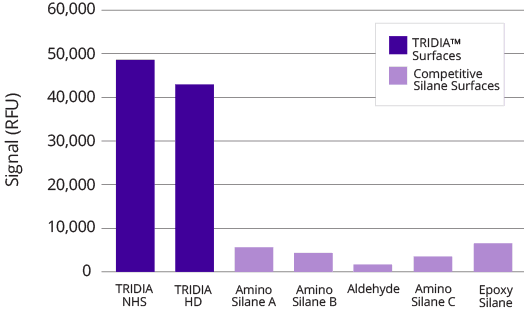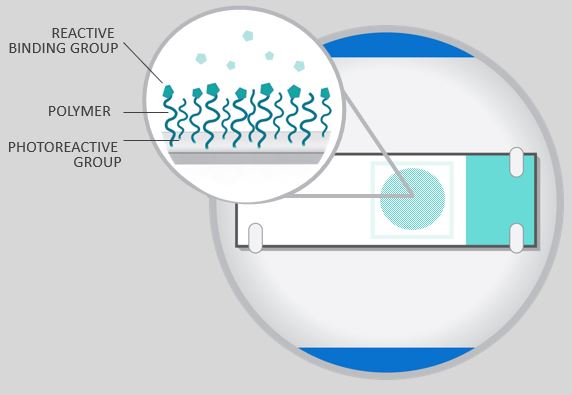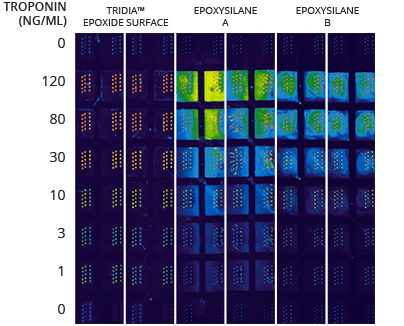Microarray Slides/Surfaces
molecular diagnostics
Surmodics TRIDIA™ surface coatings optimize DNA, RNA, protein, and cell attachment for molecular diagnostic and immunoassay applications, reducing non-specific background and improving sensitivity. These versatile coatings bind molecules to a variety of surfaces and geometries and may be customized for selectivity using passivating polymers and reactive groups.
Shop All ProductsDna oligonucleotide binding to microarray slide surfaces

TRIDIA™ NHS and TRIDIA™ HD surfaces have superior binding compared to other microarray surfaces. They bind amine-modified oligos, DNA or RNA.
Common applications: DNA arrays, SNP analysis and array CGH
graph details
Biotinylated oligonucleotide was attached either through a 5’amine group or hydroxyl group depending on the surface tested. Streptavidin-Cy5 was used for detection and quantification of oligo bound to surface.
TRIDIA™ slides (formerly CodeLink® slides) and coatings immobilize biological entities to surface materials.
- Reactive chemistry is homogeneous across entire surface for high signal and consistent results
- Passivating polymer increases sensitivity by preventing non-specific binding of unwanted biomolecules
- Thin, versatile photochemistry allows coating of various geometries and surface materials
MICROARRAY SLIDES/SURFACE CHEMISTRY

Analysis of Troponin on a Protein Microarray

Lower backgrounds and better sensitivity with TRIDIA™ EP and TRIDIA™ BA Surfaces. The TRIDIA™ slide displays more distinct spots with consistently low background across the slide.
Image details
Troponin I sandwich immunoassay. Capture antibody–mouse anti-troponin I (AbCam); primary detection antibody-rabbit anti-troponin antibody; secondary detection antibody-goat anti-rabbit-Cy3. Scanned on Axon 4200 AL scanner in the 632 nm channel.




